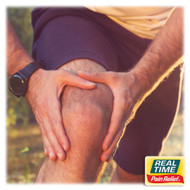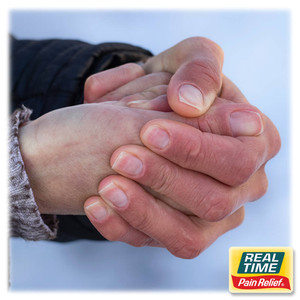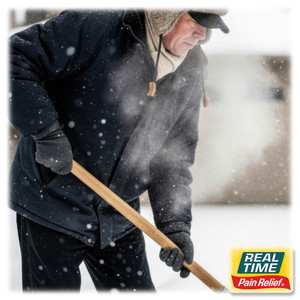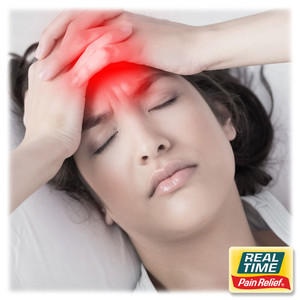9 Effective Ways to Get Relief for Runner's Knee
12th Oct 2022
Dealing with runner's knee? Here are 9 effective tips to help you get relief for runner's knee pain! Runner’s knee is a common injury that can interfere with everyday activities. Patellofemoral pain syndrome is the medical name for runner’s knee, and it involves pain in the front of the knee or the kneecap. Although it commonly occurs from athletics, anyone can develop the condition.
Runner's knee pain can develop due to an injury or overstress of the knee from activities, such as running, jumping, or squatting. But additional factors can also contribute to runner’s knee. For example, a structural defect that causes the knee to move out of proper alignment when walking or running can also lead to the condition.
Tight Achilles tendons or tight hamstrings can also throw off knee alignment and cause runner’s knee. Weakened thigh muscles and poor foot support may increase the chances of developing runner’s knee.
Symptoms of Runner’s Knee
The most common symptom of runner’s knee is pain in the front of the knee or around the kneecap. Pain may occur during an activity, such as running. But in some cases, the knee becomes painful after sitting for a while, especially with a bent knee. Additional symptoms may include:
- A feeling of instability or weakness in the knee
- Rubbing or clinking sounds in the knee when you straighten it
- A kneecap that is tender to the touch
Usually, symptoms start gradually. For example, you might notice a little swelling or pain after running. As time goes on, pain may become worse and be constant.
9 Tips to Decrease Pain from Runner’s Knee
Runner’s knee can usually be treated with self-care tips and at home treatments. Trying a combination of the treatments below may be the most helpful. Consider the following tips to reduce pain:
#1) Reduce Running Distance or Switch to Walking:
If you are a runner, it may be necessary to stop running for a while until the pain subsides. If you don’t want to stop completely, decreasing distance may be helpful. Taking a break from running might allow time for your knee to heal.
#2) Take a Joint Supplement:
Joint supplements can be extremely beneficial for people that have runner’s knee. Supplements that have natural ingredients are a good choice. Some ingredients to look for are ginger root and Boswellia serrata. Studies have found them to help improve joint health with consistent use.
Look for a joint supplement that can help to decrease pain, reduce inflammation, and improve morning flexibility. Some joint supplements may also decrease exercise-induced muscle damage and prevent future complications.
#3) Invest In Supportive Shoes:
Wearing shoes that fit well and provide good shock absorption may decrease runner's knee pain. Also, arch supports may improve your gait when running and keep your knee in proper alignment.
#4) Perform Strengthening Exercises:
Exercises that build strength in your thighs, calves, and glutes may decrease runner's knee pain. Building muscles in your core and hips are also helpful. Keep in mind; if you have runner’s knee, doing exercises, such as squats and lunges may irritate the knee further. Consider strength exercises that don’t place too much stress on the knee joint.
#5) Elevate the Leg:
Elevating your leg may reduce swelling in the kneecap. Place a few pillows under your knee when sitting. Keep your knee above the level of your heart, and your foot should be above your knee.
#6) Apply Topical Pain Relief Lotion:
Applying topical pain relief lotion can be a great way to decrease pain from runner’s knee. Unlike pain medication, pain relief lotion does not cause unwanted side effects. Pain relief lotion that contains ingredients, such as chondroitin, glucosamine, and menthol is effective to reduce pain associated with runner’s knee.
#7) Use Ice:
Applying ice may decrease discomfort and swelling due to runner’s knee. Place an ice pack on the knee for about 20 to 30 minutes three or four times a day.
#8) Do Stretching Exercises:
Stretching can also be useful to reduce pain in the knee. Perform exercises that stretch the calves and thighs daily to improve alignment. Avoid overstretching, which could worsen pain.
#9) Compression Knee Wrap:
Use a compression bandage to wrap your knee to decrease swelling. Avoid wrapping the knee too tightly, which can decrease circulation and cause swelling below the knee.
If you try at home therapies and the pain does not decrease in about three weeks or gets worse, talk to your doctor. Additional treatment may be needed.
Professional treatment for runner’s knee may depend on several factors, such as how severe the pain is and how long it has lasted. Your overall health and activity level may also play a role in the most effective treatment.
Physical therapy may be recommended, which might include strengthening exercises, stretching, or gait retraining. Gait retraining involves specific ways to change the way you run or walk that keeps your knee in better alignment.
For over 20 years, families across the U.S. have turned to Real Time’s lotions and creams for PAIN RELIEF YOU CAN TRUST®. From Lifestyle Essentials, through our Nujuvena line, to Pain Relief Formulas, Real Time has you covered.





